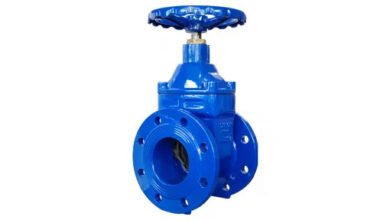Secure Steps: Prioritizing Safety in Your Moving Process

Moving to a new home marks the beginning of an exciting chapter in your life, but it also entails a myriad of tasks and challenges, with safety being paramount among them. Whether you’re relocating across town or to a different state, ensuring the safety of your belongings and your family throughout the moving process is essential. In this comprehensive guide, we’ll delve into secure steps for prioritizing safety in your moving process, along with crucial points to consider when selecting a reputable moving company. Additionally, we’ll explore essential safety measures to check within your house or apartment during the moving process and after moving out to safeguard your property and ensure a smooth transition.
1. Thorough Planning and Organization
Effective planning is the cornerstone of a safe and successful move. Start by creating a detailed moving checklist that outlines all tasks, deadlines, and essential items to address before, during, and after the move. Allocate sufficient time for packing, scheduling movers, and handling logistics to avoid last-minute stress and potential safety hazards.
2. Proper Packing Techniques
Proper packing is crucial for safeguarding your belongings during transit. Use high-quality packing materials such as sturdy boxes, bubble wrap, packing paper, and packing tape to protect fragile items from damage. Pack heavy items in smaller boxes to prevent overexertion and ensure stability during lifting and transportation. Label each box clearly with its contents and the room it belongs to for easy identification and organized unpacking.
3. Choosing a Reputable Moving Company: Essential Points to Consider
a. Conducting In-Home Estimates
A reputable moving company should send agents to evaluate your moving needs and provide accurate cost estimates based on factors such as distance, size of the move, and additional services required. Avoid companies that provide vague or over-the-phone estimates, as they may not accurately reflect the final cost of your move.
b. License and Insurance Verification
Ensure that the moving company is properly licensed and insured to protect your belongings in case of accidents, damages, or loss during transit. Request proof of insurance and verify their credentials through the Department of Transportation or relevant regulatory agencies to ensure compliance with safety standards and regulations.
c. Transparent Pricing and Contracts
Opt for moving companies that offer transparent pricing and provide written contracts detailing all services, fees, and terms of the agreement. Beware of companies that require large deposits upfront or have hidden fees, as these practices may indicate potential risks or unreliable service.
d. Reputation and Reviews
Research prospective moving companies thoroughly, seeking recommendations from trusted sources, friends, family, or online reviews. A reputable moving company with positive feedback and a solid reputation is more likely to prioritize safety, reliability, and customer satisfaction throughout the moving process.
e. Safety Protocols and Training
Inquire about the moving company’s safety protocols, training procedures for their staff, and adherence to industry standards and regulations. A reputable moving company should prioritize safety measures such as proper lifting techniques, secure packing methods, and compliance with traffic regulations during transportation.
Essential Safety Points for Checking the House/Apartment During and After Moving
1. Inspect for Damages
https://paramountmoving.ca/ before moving in or after moving out, thoroughly inspect the house or apartment for any damages or safety hazards. Check for structural issues, leaks, electrical problems, or other potential risks that may require immediate attention. Document any pre-existing damages and communicate them with the landlord or property management for resolution.
2. Test Smoke and Carbon Monoxide Detectors
Ensure that smoke detectors and carbon monoxide detectors are installed and functioning correctly in the new home or apartment. Test the alarms regularly and replace batteries as needed to maintain optimal safety. Familiarize yourself with emergency evacuation routes and procedures to mitigate risks in the event of a fire or other emergencies.
3. Secure Entry Points
Check the locks and entry points of the house or apartment to ensure they are secure and in good working condition. Consider installing deadbolts, security cameras, or additional safety measures for added protection and peace of mind. Change the locks or rekey the doors if necessary to enhance security and prevent unauthorized access.
4. Identify Emergency Contacts and Resources
Familiarize yourself with local emergency services, hospitals, police stations, and utility providers in the area. Keep a list of emergency contacts handy and share it with household members to ensure prompt response in case of emergencies. Be prepared for unforeseen circumstances by stocking essential supplies such as first-aid kits, flashlights, batteries, and emergency food and water supplies.
5. Childproofing and Pet Safety
If you have children or pets, take proactive measures to childproof the house or apartment and ensure their safety. Install safety gates, outlet covers, cabinet locks, and other childproofing devices to prevent accidents and injuries. Create a designated area for pets with food, water, bedding, and toys to keep them safe and comfortable during the transition.
Conculsion
By following these secure steps and essential safety points, you can prioritize safety in your moving process and ensure a smooth and secure transition to your new home. Remember to plan ahead, choose a reputable moving company, and conduct thorough inspections to safeguard your belongings and your family’s well-being throughout the moving journey.




